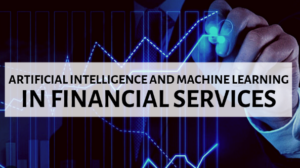
Artificial Intelligence
In today’s rapidly evolving financial landscape, Artificial Intelligence (AI) and Machine Learning (ML) have emerged as pivotal tools, revolutionizing the industry. These technologies empower financial institutions to make data-driven decisions, enhance customer experiences, and optimize various aspects of their operations.
The Role of AI and ML in Risk Assessment
One of the most significant applications of AI and ML in finance is risk assessment. Traditionally, assessing and mitigating financial risks involved a combination of historical data analysis and human judgment. However, AI and ML have changed the game by automating and enhancing this process.
AI algorithms can analyze vast datasets at lightning speed, identifying potential threats and trends that might be missed by human analysts. This empowers financial institutions to make informed investment decisions and reduce exposure to risks. For instance, AI models can predict market trends and help in creating customized investment portfolios. Hence, which align with clients’ goals and risk tolerance.
In the realm of credit risk assessment, Machine Learning is proving invaluable. Traditional scoring models often rely on a limited set of data, such as credit history, income, and employment status. ML algorithms, on the other hand, consider a wider range of information, including social and online data. This broader perspective leads to more accurate assessments of an individual’s creditworthiness, potentially creating financial opportunities for those whom traditional models may have overlooked.
Proactive Fraud Detection with Machine Learning
Fraud detection is another area where ML shines. Machine Learning models can scrutinize transactions in real-time, identifying suspicious patterns and anomalies. This proactive approach is immensely valuable in reducing financial losses and protecting customers from unauthorized activities. Moreover, it can adapt and learn from new data, making it more effective over time.
For instance, when a credit card transaction occurs in a foreign country and is followed shortly by another transaction halfway across the world, an ML model can identify this as unusual behavior and flag it for investigation. This real-time, proactive fraud detection can save financial institutions millions by preventing fraudulent transactions.
Enhancing Customer Experiences through Artificial Intelligence
Customer experience is at the forefront of the financial industry, and AI is playing a pivotal role in making it more efficient and user-friendly. AI-driven chatbots, for instance, provide immediate support to customers, answering their queries and assisting with transactions 24/7. This accessibility not only satisfies customers but also reduces the workload of customer service agents, allowing them to focus on more complex issues.
Furthermore, AI is improving the personalization of financial services. Customer data is leveraged to create highly customized product recommendations. For example, if a customer frequently shops online, their bank might suggest a credit card with cashback benefits for online purchases. This level of personalization not only enhances the customer experience but also drives customer loyalty.
Robo-Advisors and Personalized Investment Strategies
The investment landscape is undergoing a significant transformation with the introduction of AI-driven robo-advisors. These automated systems are designed to provide affordable and personalized financial advice. By considering personal preferences, risk tolerance, and financial goals, they can create tailored investment strategies.
Robo-advisors make investing more accessible to a broader range of investors, including those with smaller portfolios. They offer diversified investment options, monitor performance, and automatically rebalance portfolios as needed. This not only simplifies the investment process but also ensures that portfolios remain aligned with clients’ goals.
Conclusion
In summary, AI and ML shape the future of finance through optimized risk assessment, revolutionary fraud detection, enhanced customer experiences, and personalized investment strategies. As these technologies evolve, financial institutions must adapt to remain competitive and meet growing customer demands.
Financial institutions that embrace AI and ML stand to gain a competitive edge in the industry. They can harness the power of data to make more informed decisions, provide superior customer experiences, and offer personalized financial services. As AI and ML technologies advance further, the finance sector is sure to see even more transformative changes in the coming years. To thrive in this evolving landscape, financial institutions must continue to invest in these technologies and harness their full potential.


